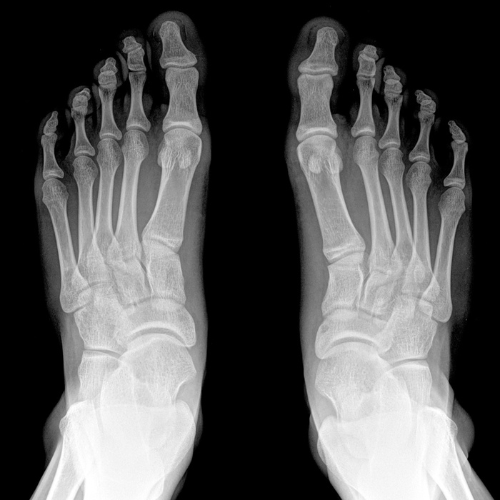
Bunion Treatment Canberra — Understanding & Fixing Bunions from the Ground Up
Have a bunion and unsure how to treat it?
Bunions — or hallux valgus — are one of the most common foot conditions seen at The Body Lab in Canberra.
Research suggests that 25–36% of people develop bunions at some point in their lives, especially women and older adults.
But here’s the truth:
Bunions aren’t just “bumps.”
They’re a visible sign that something deeper has gone wrong with the way your body moves — usually starting from the feet, knees, hips, or even spine.
What Is a Bunion?
A bunion is a bony deformity at the base of the big toe (the first metatarsophalangeal joint).
It occurs when the big toe drifts inward, angling toward the smaller toes, while the joint itself pushes outward — forming that telltale lump on the side of your foot.
This joint bears a huge portion of your body weight when walking, so when its mechanics fail, discomfort and pain follow.
Left untreated, bunions can limit mobility, distort gait patterns, and make it difficult to find shoes that fit comfortably.
Common Bunion Symptoms
If you’re noticing changes around your big toe, look out for these signs:
Pain, swelling, or redness around the big toe joint
Numbness, burning, or tingling near the bunion
Thick or hard skin (calluses or corns) on the bunion or ball of the foot
Difficulty bending the big toe
Changes in walking pattern or balance
Trouble finding comfortable shoes
Toe deformities like hammertoes
CLASSIFICATION OF BUNIONS
Bunions differ in severity due to the limitations around the big toe knuckle and as a result I scale to classify and describe the severity of bunions:
Assess your bunions with the classification tool above.
First, stand without any shoes or socks and look at your left big toe. Pay attention only to your big toe, ignoring the other toes and their spacing. From the pictures provided, choose the one that most accurately represents the angle of your left big toe. Repeat the same process for your right big toe.
What Causes Bunions?
At The Body Lab, we view bunions as the result — not the cause — of dysfunction.
They’re the final symptom of deeper mobility problems in the foot, lower limb, or spine.
When movement is restricted in key joints — such as the ankle, knee, or pelvis — the body compensates.
Over time, this compensation increases stress on the big toe joint, forcing it to adapt in unhealthy ways.
Eventually, that constant pressure reshapes the joint into a bunion.
Bunions often develop due to a combination of factors, including:
Poor foot mechanics or arch collapse
Limited ankle mobility or flat feet
Tight calves or restricted hip rotation
Previous injuries altering gait
Weak intrinsic foot muscles
Genetic predisposition (especially in women)
Poorly fitted or narrow footwear
In short: bunions are movement problems that show up in your bones.
Why Address the Whole Body, Not Just the Bump
Treating bunions means addressing how your entire body moves, not just the joint itself.
That’s why our approach at The Body Lab Canberra combines biomechanics, movement therapy, and clinical assessment to identify the root cause.
We examine how your feet, knees, hips, and spine interact — then retrain those patterns through targeted exercise therapy.
This system-wide view doesn’t just reduce pain; it helps prevent future deformity by restoring proper joint alignment and movement efficiency.
Bunion Treatment Options
The best bunion treatment depends on your condition’s severity and your mobility needs.
Here’s what works — and what doesn’t:
✅ Effective, Movement-Based Treatments
Exercise Therapy
The most effective way to correct bunions. Focused mobility and strengthening drills retrain your foot mechanics and rebuild stability across the arch and big toe joint.
Foot Mobilisation Therapy
Helps restore joint glide and range of motion through the entire foot, not just the bunion area.
Gait & Posture Retraining
Corrects walking patterns, reduces compensations, and restores symmetry across the lower limbs.
⚠️ Symptom-Relief Only (Short-Term Help)
Bunion Splints – May offer night-time support in early stages, but limited long-term correction.
Bunion Guards – Protect the bump in shoes; helpful for comfort, not correction.
Taping or Padding – Redistributes pressure temporarily.
Cortisone Injections – Reduce pain and inflammation but don’t change the joint structure.
Orthotics – Can relieve pressure but won’t correct movement dysfunction.
❌ Ineffective or Misleading Options
Silicone Toe Spacers – These don’t address the underlying mobility issues in the arch or metatarsals.
Surgery Alone – May remove the bump but doesn’t fix the movement pattern that caused it.
Start Your Bunion Recovery Today
You don’t have to live with bunion pain or wait until surgery becomes your only option.
At The Body Lab Canberra, we treat bunions by improving movement, not masking symptoms.
📅 Book a Virtual or In-Person Consultation
🦶 Get a Comprehensive Bunion Assessment
📞 Or Arrange a Free Call-Back to discuss your options



